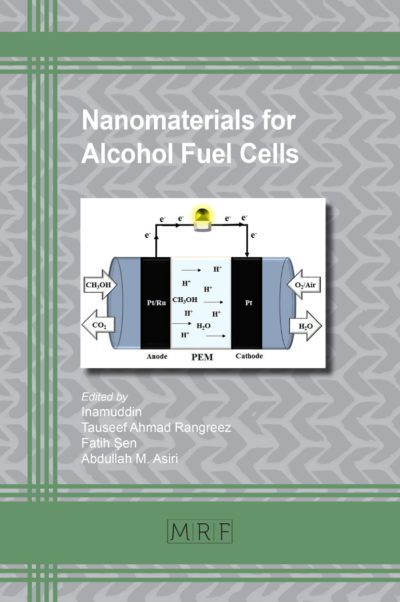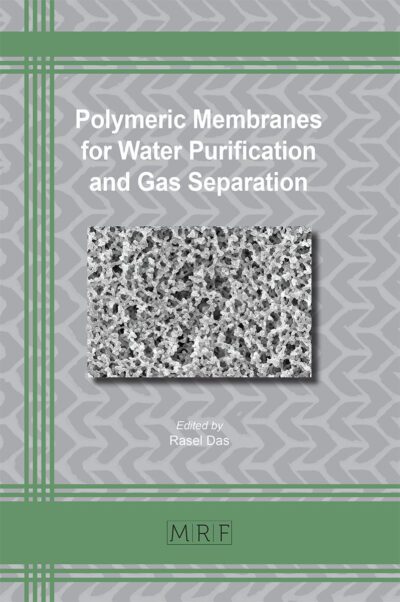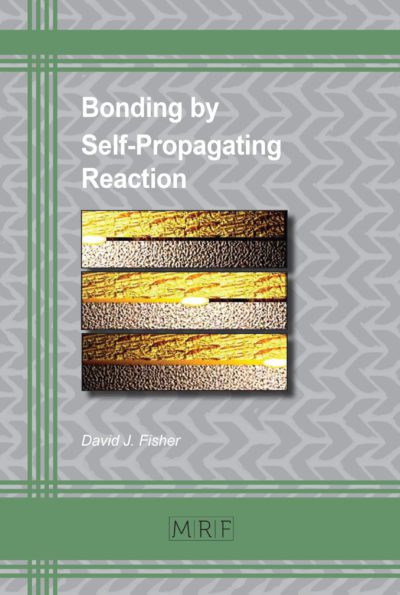Helical structure of linear homopolymers
Sorana D. BOLBOACĂ, Lorentz JÄNTSCHI
download PDFAbstract. The aim of our research was to conduct a computational study on helical geometries of several homopolymers. Simple helix of polymers with seventeen (poly(lactic acid)) or eighteen (poly(1-chloro-trans-1-butenylene), poly(1-methyl-trans-1-butenylene), poly(1,4,4-trifluoro-trans-1-butenylene), polyacrylonitrile and respectively polychlorotrifluoroethylene) monomers were investigated. The X, Y, and Z coordinates obtained after optimization of the geometry of polymers were used as input data to identify the rotation and translation of the coordinates and respectively the coefficient of the helix. The values of interest were calculated by minimization of residuals using two different protocols. The first protocol investigated the whole polymer by imposing (step 1) or not (step 2) a fixed value of the helix coefficient. The second protocol investigated by minimization of residuals if the monomer (one or two) from each end of the polymer is or not an outlier of the helical geometry of the polymer.
Keywords
Helical structure, Computational study, Polymers
Published online 11/5/2018, 17 pages
Copyright © 2018 by the author(s)
Published under license by Materials Research Forum LLC., Millersville PA, USA
Citation: Sorana D. BOLBOACĂ, Lorentz JÄNTSCHI, ‘Helical structure of linear homopolymers’, Materials Research Proceedings, Vol. 8, pp 35-51, 2018
DOI: http://dx.doi.org/10.21741/9781945291999-5
The article was published as article 5 of the book Powder Metallurgy and Advanced Materials
![]() Content from this work may be used under the terms of the Creative Commons Attribution 3.0 licence. Any further distribution of this work must maintain attribution to the author(s) and the title of the work, journal citation and DOI.
Content from this work may be used under the terms of the Creative Commons Attribution 3.0 licence. Any further distribution of this work must maintain attribution to the author(s) and the title of the work, journal citation and DOI.
References
[1] C.S. Hanes, The action of amylases in relation to the structure of starch and its metabolism in the plant. Parts IV-VII, New Phytologist 36 (1937) 101-141. https://doi.org/10.1111/j.1469-8137.1937.tb06906.x
[2] C.S. Hanes, The action of amylases in relation to the structure of starch and its metabolism in the plant. Parts I-III, New Phytologist 36 (1937) 189-239. https://doi.org/10.1111/j.1469-8137.1937.tb06913.x
[3] K. Freudenberg, E. Schaaf, G. Dumpert, T. Ploetz, Neue Ansichten über die Stärke, Naturwissenschaften 27 (1939) 850-853. https://doi.org/10.1007/BF01489430
[4] L. Pauling, R.B. Corey, Configuration of polypeptide chains, Nature, 168 (1951) 550-551. https://doi.org/10.1038/171737a0
[5] J.D. Watson, F.H.C. Crick, Molecular structure of nucleic acids: a structure for deoxyribose nucleic acid, Nature 171 (1953) 737-738. https://doi.org/10.1038/171737a0
[6] H. Dong, J.Y. Shu, N. Dube, Y. Ma, M.V. Tirrell, K.H. Downing, T. Xu, 3-Helix micelles stabilized by polymer springs, J. Am. Chem. Soc. 134 (2012) 11807-11814. https://doi.org/10.1021/ja3048128
[7] Y. Chatani, T. Kobatake, H. Tadokoro, R. Tanaka, Structural studies of poly(ethylenimine). 2. Double-stranded helical chains in the anhydrate, Macromolecules 15 (1982) 170-176. https://doi.org/10.1021/ma00229a034
[8] C. Lambert, F. Koch, S.F. Völker, A. Schmiedel, M. Holzapfel, A. Humeniuk, M.I.S. Röhr, R. Mitric, T. Brixner, Energy Transfer Between Squaraine Polymer Sections: From Helix to Zigzag and All the Way Back, J. Am. Chem. Soc. 137 (2015) 7851-7861. https://doi.org/10.1021/jacs.5b03644
[9] R.W. Newberry, R.T. Raines, n→π* interactions in poly(lactic acid) suggest a role in protein folding, Chemical Communications 49 (2013) 7699-7701. https://doi.org/10.1039/c3cc44317e
[10] L. Jäntschi, S.D. Bolboacă, Study of geometrical shaping of linear chained polymers stabilized as helixes, Studia Universitatis Babes-Bolyai Chemia LXI (2016) 131-145.
[11] J.A. Di Palma, M.B. Cleveland, J. McGowan, J.L. Herrera, A randomized, multicenter comparison of polyethylene glycol laxative and tegaserod in treatment of patients with chronic constipation, The American Journal of Gastroenterology 102 (2007) 1964-1971. https://doi.org/10.1111/j.1572-0241.2007.01365.x
[12] A. Kolate, D. Baradia, S. Patil, I. Vhora, G. Kore, A. Misra, PEG – A versatile conjugating ligand for drugs and drug delivery systems, J. Controlled Release 192 (2014) 67-81. https://doi.org/10.1016/j.jconrel.2014.06.046
[13] Z. Zhang, Y. Zhao, X. Meng, D. Zhao, D. Zhang, L. Wang, C. Liu, A Simple Zn2+ complex-based composite system for efficient gene delivery, PLoS One 11 (2016) e0158766. https://doi.org/10.1371/journal.pone.0158766
[14] X. Ping, K. Jiang, S.-Y. Lee, J.-X. Cheng, X. Jin, PEG-PDLLA micelle treatment improves axonal function of the corpus callosum following traumatic brain injury, J Neurotrauma 31 (2014) 1172-1179. https://doi.org/10.1089/neu.2013.3147
[15] V.N. Bharadwaj, J. Lifshitz, P.D. Adelson, V.D. Kodibagkar, S.E. Stabenfeldt, Temporal assessment of nanoparticle accumulation after experimental brain injury: Effect of particle size, Sci. Rep. 6 (2016) 29988. https://doi.org/10.1038/srep29988
[16] A. Lasek-Duriez, M.C. Castelain, P. Modiano, Allergic contact dermatitis due to methoxy PEG-22 dodecyl glycol present in a cosmetic cold cream. Annales de Dermatologie et de Vénéréologie 140 (2013) 528-530. https://doi.org/10.1016/j.annder.2013.01.427
[17] Current EU approved additives and their E Numbers. UK Government – Food Standards Agency. Retrieved 21 October 2016.
[18] O. Yemul, T. Imae, Synthesis and characterization of poly(ethyleneimine) dendrimers, Colloid. Polym. Sci. 286 (2008) 747-752. https://doi.org/10.1007/s00396-007-1830-6
[19] K. Kim, B. Bae, Y.J. Kang, J.-M. Nam, S. Kang, J.-H. Ryu, Natural polypeptide-based supramolecular nanogels for stable noncovalent encapsulation, Biomacromolecules 14 (2013) 3515-3522. https://doi.org/10.1021/bm400846h
[20] Y. Li, M. Guo, Z. Lin, M. Zhao, M. Xiao, C. Wang, T. Xu, T. Chen, B. Zhu, Polyethylenimine-functionalized silver nanoparticle-based co-delivery of paclitaxel to induce HepG2 cell apoptosis. Int. J Nanomedicine 11 (2016) 6693-6702. https://doi.org/10.2147/IJN.S122666
[21] X. Zhao, H. Cui, W. Chen, Y. Wang, B. Cui, C. Sun, Z. Meng, G. Liu, Morphology, structure and function characterization of PEI modified magnetic nanoparticles gene delivery system, PLoS One 9 (2014) e98919. https://doi.org/10.1371/journal.pone.0098919
[22] J.D. Ziebarth, D.R. Kennetz, N.J. Walker, Y. Wang, Structural comparisons of PEI/DNA and PEI/siRNA complexes revealed with molecular dynamics simulations, J Phys. Chem. B 121 (2017) 1941-1952. https://doi.org/10.1021/acs.jpcb.6b10775
[23] M.M. Azevedo, P. Ramalho, A.P. Silva, R. Teixeira-Santos, C. Pina-Vaz, A.G. Rodrigues, Polyethyleneimine and polyethyleneimine-based nanoparticles: novel bacterial and yeast biofilm inhibitors, J Medical Microbiology 63 (2014) 1167-1173. https://doi.org/10.1099/jmm.0.069609-0
[24] N. Sahiner, S. Sagbas, M. Sahiner, R.S. Ayyala, Polyethyleneimine modified poly(Hyaluronic acid) particles with controllable antimicrobial and anticancer effects. Carbohydr. Polym. 159 (2017) 29-38. https://doi.org/10.1016/j.carbpol.2016.12.024
[25] O. Martin, L. Avérous, Poly(lactic acid): plasticization and properties of biodegradable multiphase systems, Polymer 42 (2001) 6209-6219. https://doi.org/10.1016/S0032-3861(01)00086-6
[26] R. Mehta, V. Kumar, H. Bhunia, S.N. Upadhyay, Synthesis of poly(lactic acid): a review. J Macromolecular Sci.: Part C: Polymer Rev. 45 (2005) 325-349. https://doi.org/10.1080/15321790500304148
[27] P. Gentile, V. Chiono, I. Carmagnola, P.V. Hatton, An overview of Poly(lactic-co-glycolic) Acid (PLGA)-based biomaterials for bone tissue engineering, Int. J Mol. Sci. 15 (2014) 3640-3659. https://doi.org/10.3390/ijms15033640
[28] J.S. Fernandes, R.L. Reis, R.A. Pires, Wetspun poly-L-(lactic acid)-borosilicate bioactive glass scaffolds for guided bone regeneration. Mater. Sci. Eng.: C Mater. Biological Appl. 71 (2017) 252-259. https://doi.org/10.1016/j.msec.2016.10.007
[29] N. Saito, K. Takaoka, New synthetic biodegradable polymers as BMP carriers for bone tissue engineering, Biomaterials 24 (2003) 2287-2293. https://doi.org/10.1016/S0142-9612(03)00040-1
[30] R. Mehta, V. Kumar, H. Bhunia, S.N. Upadhyay, Synthesis of poly(lactic acid): a review, J Macromolecular Sci. Polymer Rev. 45 (2005) 325-349. https://doi.org/10.1080/15321790500304148
[31] C. Chen, G. Lv, C. Pan, M. Song, C. Wu, D. Guo, X. Wang, B. Chen, Z. Gu, Poly(lactic acid) (PLA)-based nanocomposites-a novel way of drug-releasing, Biomedical Materials 2 (2007) L1-4. https://doi.org/10.1088/1748-6041/2/4/L01
[32] J. Li, C. Chen, X. Wang, Z. Gu, B. Chen, Novel Strategy to Fabricate PLA/Au nanocomposites as an efficient drug carrier for human leukemia Cells in Vitro, Nanoscale Research Letters 6 (2011) 29.
[33] X. Liu, Y. Xu, Z. Wu, H. Chen, Poly(N-vinylpyrrolidone)-modified surfaces for biomedical applications, Macromolecular Bioscience 13 (2013) 147-154. https://doi.org/10.1002/mabi.201200269
[34] A.N. Kuskov, P.P. Kulikov, A.V. Goryachaya, M.N. Tzatzarakis, A.O. Docea, K. Velonia, M.I. Shtilman, A.M. Tsatsakis, Amphiphilic poly-N-vinylpyrrolidone nanoparticles as carriers for non-steroidal, anti-inflammatory drugs: In vitro cytotoxicity and in vivo acute toxicity study. Nanomedicine: Nanotechnology, Biology and Medicine 13 (2017) 1021-1030. https://doi.org/10.1016/j.nano.2016.11.006
[35] X. Yao, C. Xie, W. Chen, C. Yang, W. Wu, X. Jiang, Platinum-incorporating Poly(N-vinylpyrrolidone)-poly(aspartic acid) pseudoblock copolymer nanoparticles for drug delivery, Biomacromolecules 16 (2015) 2059-2071. https://doi.org/10.1021/acs.biomac.5b00479
[36] R.B. Fox, Glass transition temperature for selected polymers. In: Haynes W.M. (Ed). CRC Handbook of Chemistry and Physics, 97th Edition, 13-10, 2017 CRC Press Taylor & Francis Group, Boca Raton, FL, USA.
[37] H. Finkentscher, C. Heuck, DE Patent 654989, Verfahren zur Herstellung von Polymerisationprodukten, Anmeldetag 18.2.1930
[38] M. Schwartz, Encyclopedia of materials, parts, and finishes. (2nd ed.) CRC Press, Boca Raton, Florida, 2002.
[39] M.S.A. Rahaman, A.F. Ismail, A. Mustafa, A review of heat treatment on polyacrylonitrile fiber, Polym. Degrad. Stab. 92 (2007) 1421-1432. https://doi.org/10.1016/j.polymdegradstab.2007.03.023
[40] S. Nunna, M. Naebe, N. Hameed, B.L. Fox, C. Creighton, Evolution of radial heterogeneity in polyacrylonitrile fibres during thermal stabilization: An overview, Polym. Degrad. Stab. 136 (2017) 20-30. https://doi.org/10.1016/j.polymdegradstab.2016.12.007
[41] L. Zhang, A. Aboagye, A. Kelkar, C. Lai, H. Fong, A review: carbon nanofibers from electrospun polyacrylonitrile and their applications, J Mater. Sci. 49 (2014) 463-480. https://doi.org/10.1007/s10853-013-7705-y
[42] M. Bourourou, M. Holzinger, F. Bossard, F. Hugenell, A. Maaref, S. Cosnier, Chemically reduced electrospun polyacrilonitrile-carbon nanotube nanofibers hydrogels as electrode material for bioelectrochemical applications, Carbon 87 (2016) 233-238. https://doi.org/10.1016/j.carbon.2015.02.026
[43] W. Han, S. Dong, B. Li, L. Ge, Preparation of polyacrylonitrile- based porous hollow carbon microspheres, Colloids and Surfaces A: Physicochemical and Engineering Aspects 520 (2017) 467-476. https://doi.org/10.1016/j.colsurfa.2017.02.009
[44] S. Koutsonas, Electrical conductivity of degraded polyacrylonitrile powder by microwave irradiation for supercapacitor devices or other mobile applications, Mater. Letter. 193 (2017) 203-205. https://doi.org/10.1016/j.matlet.2017.02.001
[45] D. Liu, H. Chen, P. Yin, N. Ji, G. Zong, R. Qu, Synthesis of polyacrolonitrile by single-electron transfer-living radical polymerization using Fe(0) as catalyst and its absorption properties after modification, J Polymer Sci. Part A: Polymer Chem. 49 (2011) 2916-2923. https://doi.org/10.1002/pola.24727
[46] T. Nakajima, H. Groult, Fluorinated materials for energy conversion. Elsevier. 2005, pp. 472. ISBN 978-0-08-044472-7.
[47] R. Winter, A Consumer’s Dictionary of Household, Yard and Office Chemicals: Complete Information About Harmful and Desirable Chemicals Found in Everyday Home Products, Yard Poisons, and Office Polluters. iUniverse. 2007, p. 255.
[48] F. Cardarelli, Materials handbook: a concise desktop reference. Springer. 2008, pp. 708-709.
[49] T. Hongxiang, Overview of the development of the fluoropolymer indus. Applied Sciences 2 (2012) 496-512. https://doi.org/10.3390/app2020496
[50] M.G. Hosseini, H. Teymourinia, A. Farzaneh, S. Khameneh-asl, Evaluation of corrosion, mechanical and structural properties of new Ni-W-PCTFE nanocomposite coating, Surf. Coat. Technol. 298 (2016) 114-120. https://doi.org/10.1016/j.surfcoat.2016.04.060
[51] R.V. Mazurenko, S.M. Makhno, G.M. Gunya, P.P. Gorbyk, Effect of dispersion of copper-iodide particles on the electrical properties of composites based on polychlortrifluoroethylene, Metallofizika i Noveishie Tekhnologii 38 (2016) 647-656. https://doi.org/10.15407/mfint.38.05.0647
[52] T.P. O’Brien, G.M. McNally, W.R. Murphy, B.G. Millar, G.S. Garrett, A.H. Clarke, R.P. McGinley, Assessing the thermoformability of high-performance polymers for use in medical packaging applications. 66th Annual Technical Conference of the Society of Plastics Engineers, Plastics Encounter at ANTEC 2008; Milwaukee, WI; United States; 4 May 2008 through 8 May 2008; Technical Papers, Regional Technical Conference – Society of Plastics Engineers Volume 2, 2008, 963-96.
[53] R.M.V. Alves, S.B.M. Jaime, M.R. Goncalves, R.W. Suzuki, Plastic and glass packages for pharmaceutical products: Evaluation of light barrier properties, Revista de Ciencias Farmaceuticas Basica e Aplicada 29 (2008) 167-178.
[54] J. Gardiner, Fluoropolymers: origin, production, and industrial and commercial applications, Aust. J. Chem. 68 (2015) 13-22. https://doi.org/10.1071/CH14165
[55] J.C. Slater, The electronic structure of atoms – the hartree-fock methods and correlations, Reviews of Modern Physics 35 (1963) 484-487. https://doi.org/10.1103/RevModPhys.35.484
[56] R. Ditchfield, W.J. Hehre, J.A. Pople, Self-consistent molecular-orbital methods. IX. An extended gaussian-type basis for molecular-orbital studies of organic molecules, J Chem. Phys. 54 (1971) 724-728. https://doi.org/10.1063/1.1674902
[57] N. Safaee, A.M. Noronha, D. Rodionov, G. Kozlov, C.J. Wilds, G.M. Sheldrick, K. Gehring, Structure of the parallel duplex of poly(A) RNA: evaluation of a 50 year-old prediction, Angewandte Chemie International Edition 52 (2013) 10370-10373. https://doi.org/10.1002/anie.201303461
[58] J.W. Prothero, Correlation between the distribution of amino acids and alpha helices. Biophysical Journal 6 (1966) 367-370. https://doi.org/10.1016/S0006-3495(66)86662-6
[59] M. Bassas-Galia, S. Follonier, M. Pusnik, M. Zinn, 2 – Natural polymers: a source of inspiration. bioresorbable polymers for biomedical applications. From fundamentals to translational medicine, Woodhead Publishing, Elsevier Ltd. 2017, pp. 31-64. https://doi.org/10.1016/B978-0-08-100262-9.00002-1

































